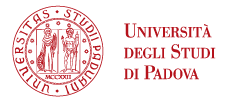The Organization of Agriculture, Sheep Farming, Economy and Society of Central-Southern Mesopotamia during the First Dynasty of Babylonia (XIX-XVI cent. BC)
General Research Area CULTURAL STUDIES
Project type INDIVIDUAL RESEARCH GRANT
Funding UNIVERSITY FUNDING
Data avvio: 1 January 2015
Data termine: 1 January 2017
Coordinatore: Cecilia Martini
Abstract:
This project addresses the conditions of agriculture, sheep farming, economy, finance, labour and society under the First Dynasty of Babylonia, i.e. at the time of one of the most renowned king of the Ancient Near East- Hammurabi. The research will start form extant editions of texts, some of which carried out by the applicant herself, namely contracts, lists and receipts. This corpus of evidence will be widened through the study of unpublished material, a huge part of which is kept at the British Museum, London. The applicant has spent several months at the BM for previous research activities which resulted in the publication of several articles and volumes (see below).
The texts which will be taken into account--about a hundred bullae referring to sheep farming plus about sixty more bullae related to various administrative issues--cover the period from Samu-abum (1894-1881 BC) to Samsu-ditana (1625-1595 BC), i.e. from the first king of Babylon, an ancestor of Hammurabi, to the fall of the city at the hands of the Hittites (1595 BC). Evidence consists of contracts for the hiring of daily workers, the loan of silver or barley to be paid off at harvesting time, receipts of duties carried out by different types of workers and craftsmen, receipts of goods and tools related to farming, rent for animals and hiring of shepherds. The main focus of the project will be in fact on the organization of farming, namely on the criteria for the assignation of fields and flocks in the Old Babylonian period. The extant evidence does not allow us to ascertain whether the keepers of those goods worked for the central administration or the private contractors whom the king and the temples entrusted with their own fields and flocks. In either case, these keepers were expected to find and hire the workers they needed, for instance harvesters, who were hired on a seasonal basis, or other kinds of workers whose contracts were annual.
The same can be said of cattle. Oxen, sheep and goats would belong either to the Palace, the temple or individuals; however, they were managed by annually hired shepherds, who often farmed out their job to subordinate workers and paid an annual fee in silver or cattle to the Palace.
The administrative texts which have been studied so far provide do not allow us to ascertain whether these shepherds were servants of the palace or freelance contractors; these areas of uncertainty could be significantly reduced, the applicant believes, through a thorough examination of the vast corpus of unpublished evidence kept at the British Museum, especially because the inquiry carried out so far has shown that the bookkeeping at the Palace was extremely accurate. Accordingly, the applicant intends to examine as many unpublished BM texts as possible and categorize their contents and features; the whole material will be published in a comprehensive volume containing the texts' autographies.
Research Fellow:
Dr. Annunziata Rositani




